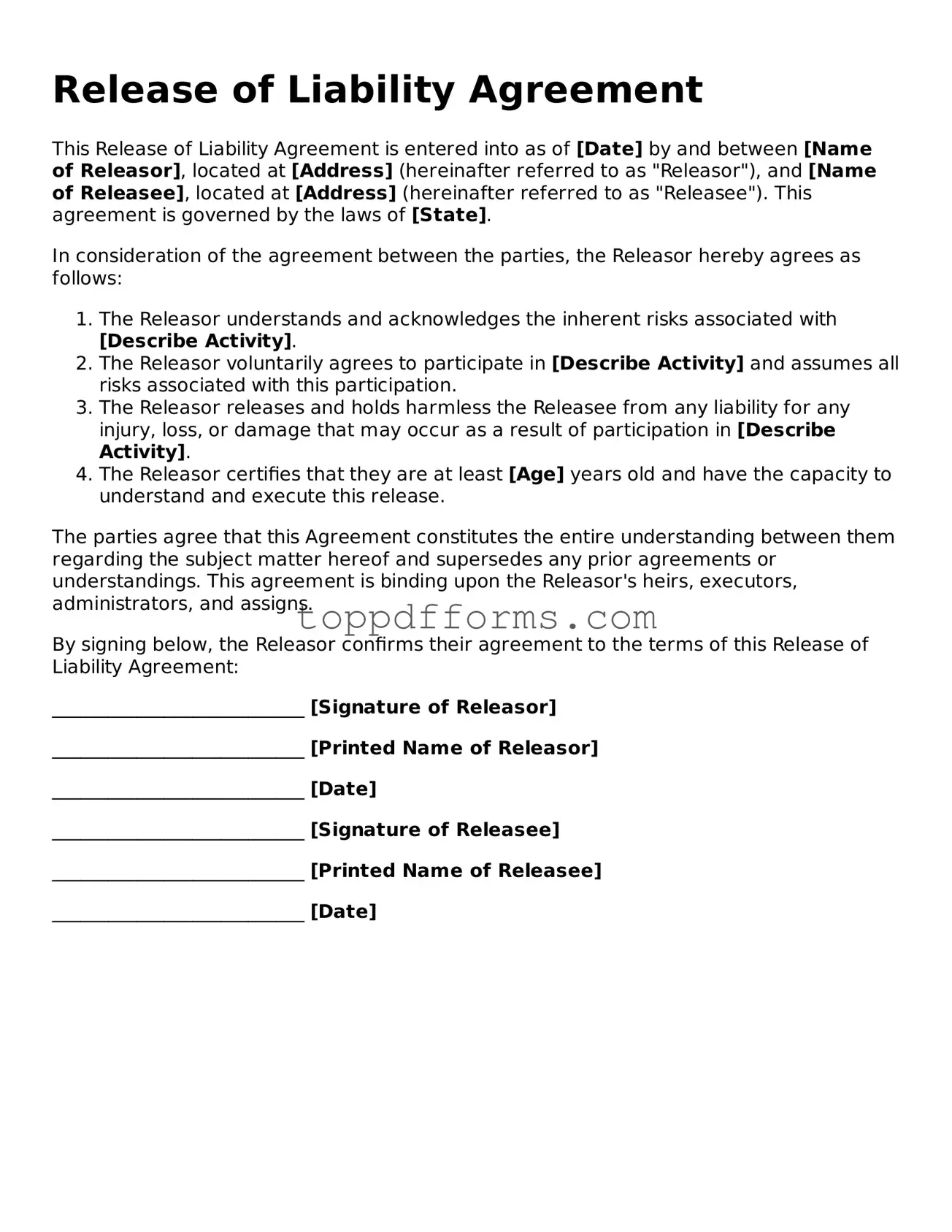What is a Release of Liability form?
A Release of Liability form is a legal document that individuals sign to acknowledge the risks associated with an activity and to waive their right to hold another party responsible for any injuries or damages that may occur. This form is commonly used in activities such as sports, recreational events, and other potentially hazardous situations.
Why should I sign a Release of Liability form?
Signing a Release of Liability form helps protect the organization or individual hosting the activity from legal claims. It also informs participants about the risks involved, allowing them to make informed decisions about their participation. By signing, you agree to assume those risks and not to pursue legal action if something goes wrong.
Are there any situations where a Release of Liability form is not enforceable?
Yes, there are circumstances where a Release of Liability may not be enforceable. For example, if the form is signed under duress, if it contains misleading information, or if it attempts to waive liability for gross negligence or intentional misconduct, a court may invalidate it.
Do I need a lawyer to draft a Release of Liability form?
While it is not mandatory to have a lawyer draft a Release of Liability form, it is advisable. A legal professional can ensure that the document meets specific legal requirements and adequately protects your interests. Using a template without proper review may lead to gaps in coverage.
Can a minor sign a Release of Liability form?
Minors typically cannot sign a Release of Liability form on their own. Instead, a parent or legal guardian must sign on their behalf. This ensures that the minor's rights are protected while still allowing them to participate in activities.
How does a Release of Liability form affect my insurance?
A Release of Liability form may impact your insurance coverage. Some insurance policies may not cover incidents that occur during activities where a Release has been signed. It is essential to review your policy and consult with your insurance provider to understand any implications.
What should I do if I am injured after signing a Release of Liability form?
If you are injured after signing a Release of Liability form, your ability to seek compensation may be limited. However, you should document the incident, seek medical attention, and consult with a legal professional to explore your options. Depending on the circumstances, there may still be avenues for recourse.
Can I revoke my consent after signing a Release of Liability form?
Generally, once you sign a Release of Liability form, it is considered binding. Revoking consent after the fact can be challenging. However, if you can demonstrate that the terms were not clear or that you were misled, you may have grounds to contest the agreement.
Is a Release of Liability form the same as an insurance waiver?
No, a Release of Liability form and an insurance waiver are not the same. A Release of Liability form waives your right to sue for injuries or damages, while an insurance waiver typically pertains to the relinquishment of certain insurance benefits. Both documents serve different purposes and should be understood distinctly.
